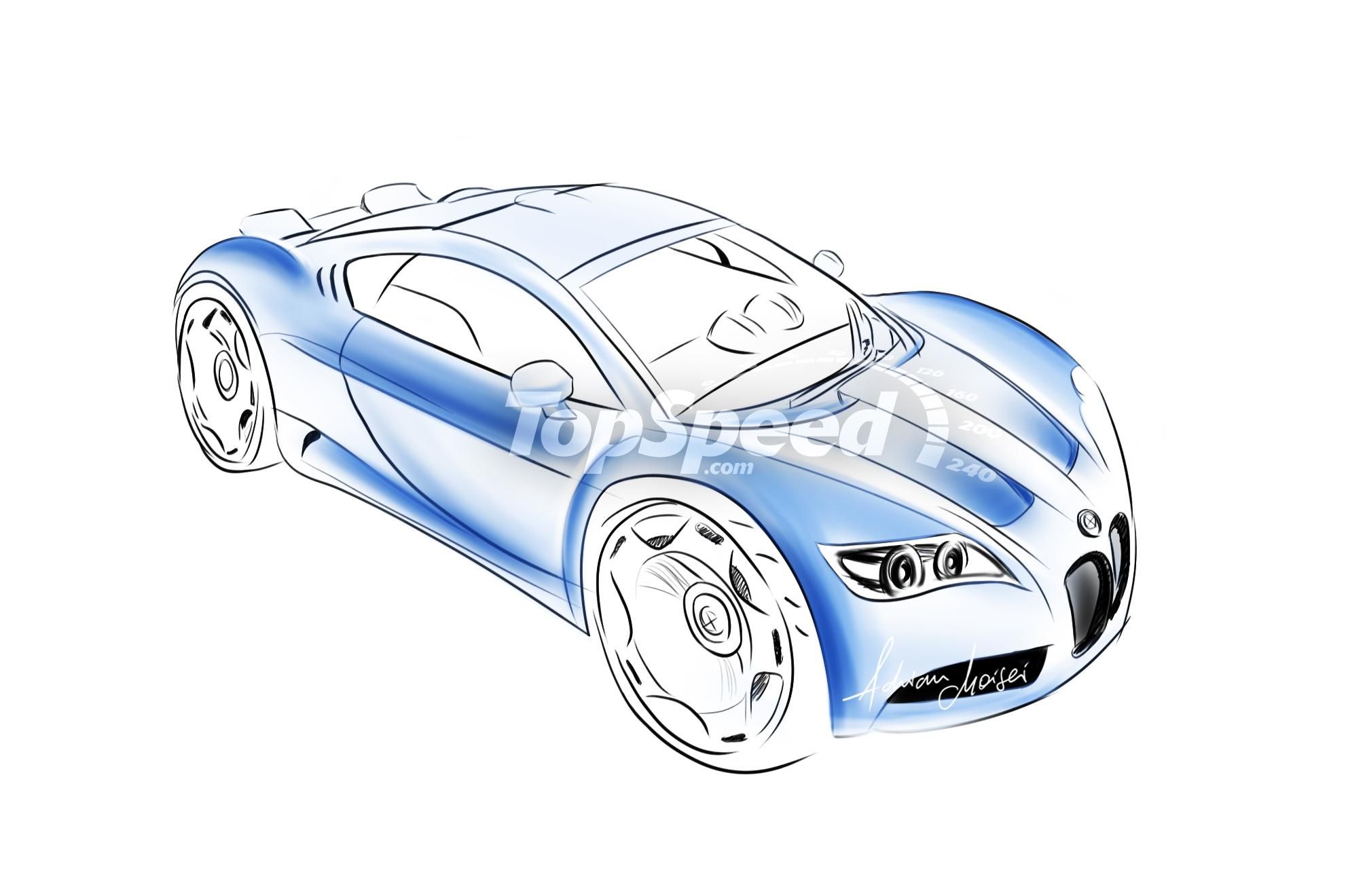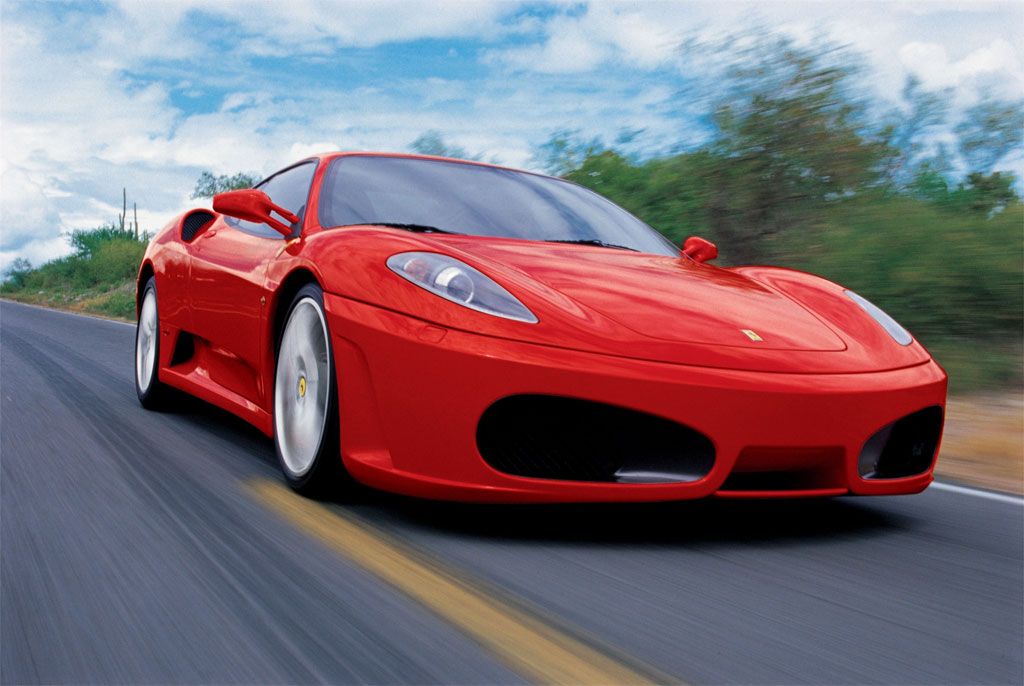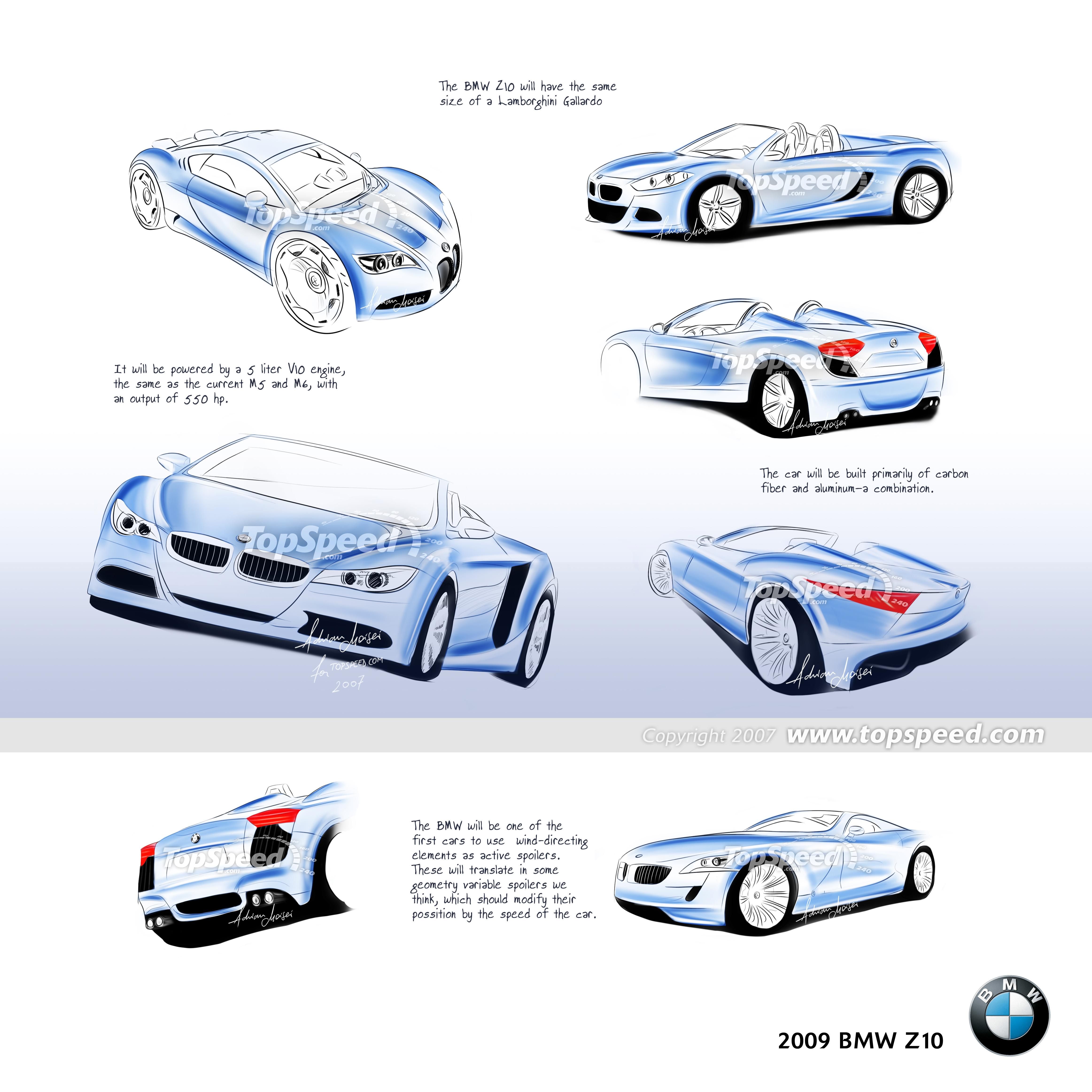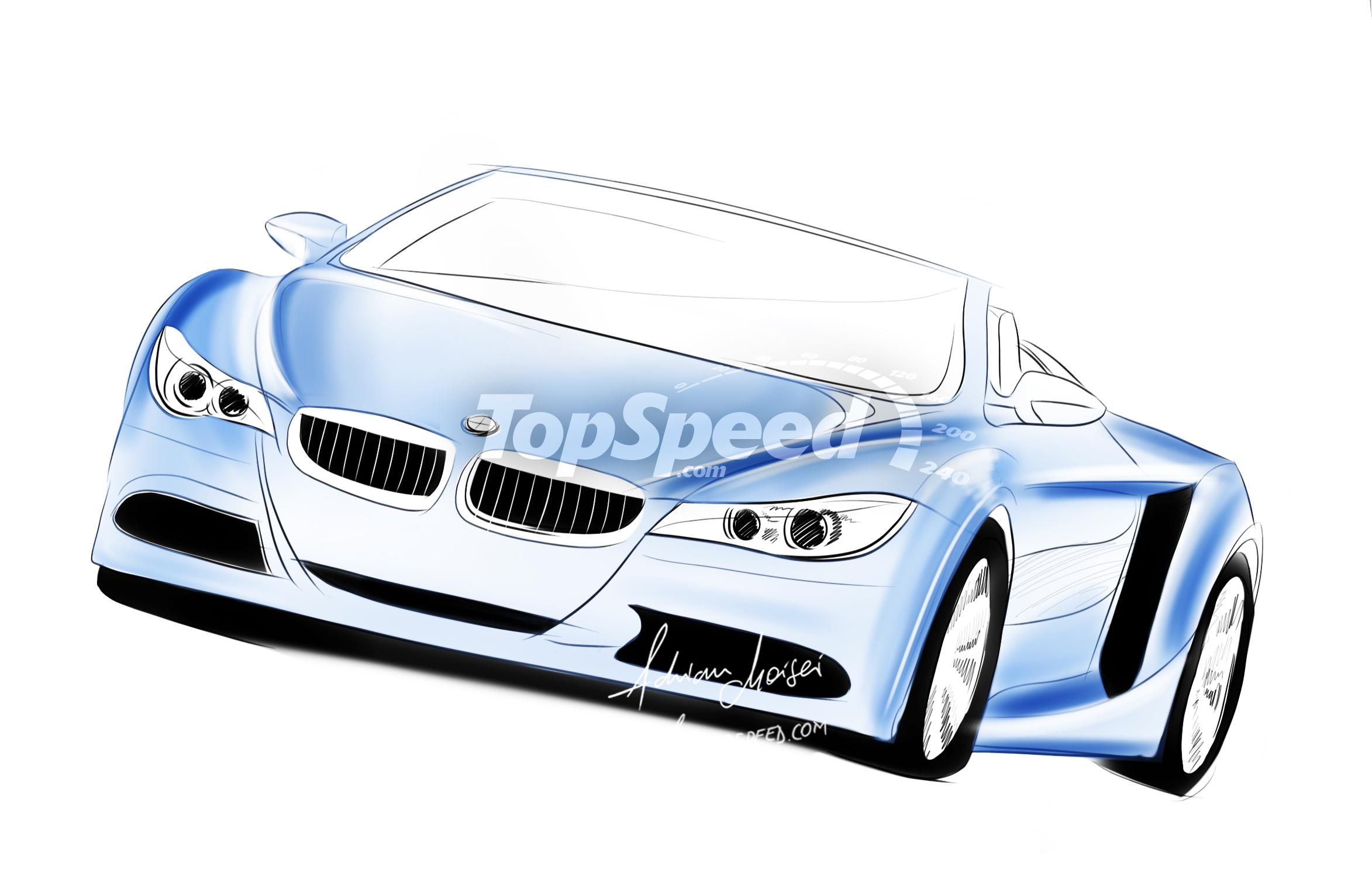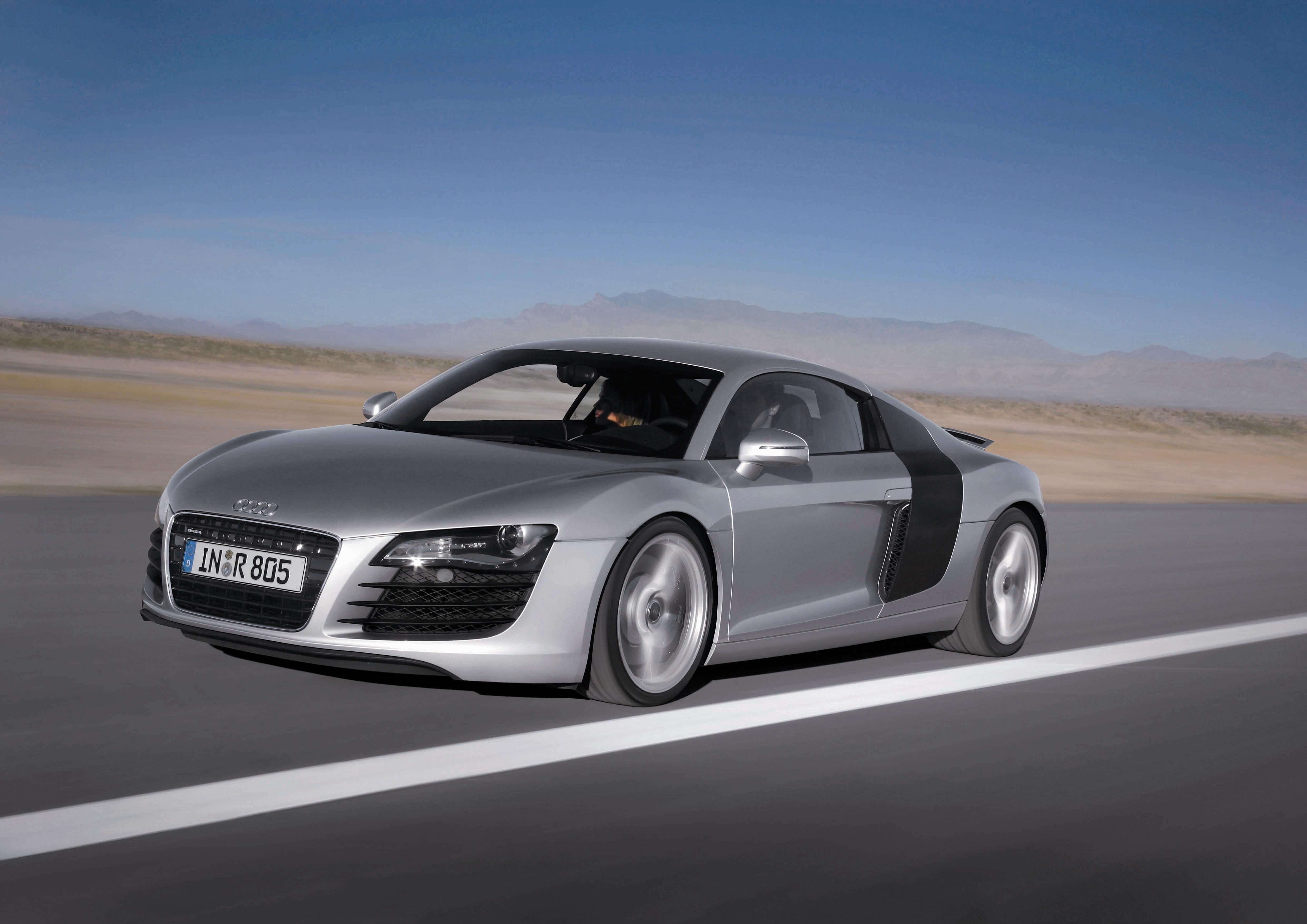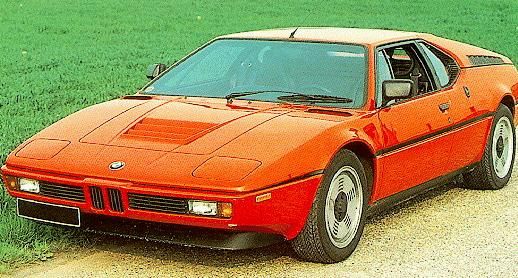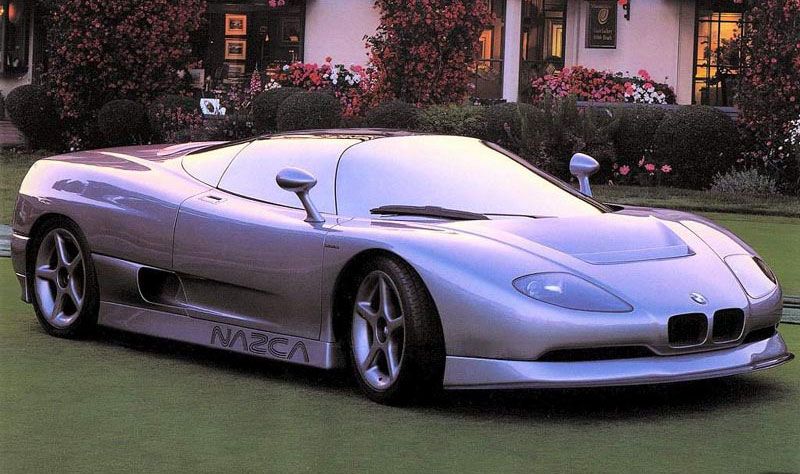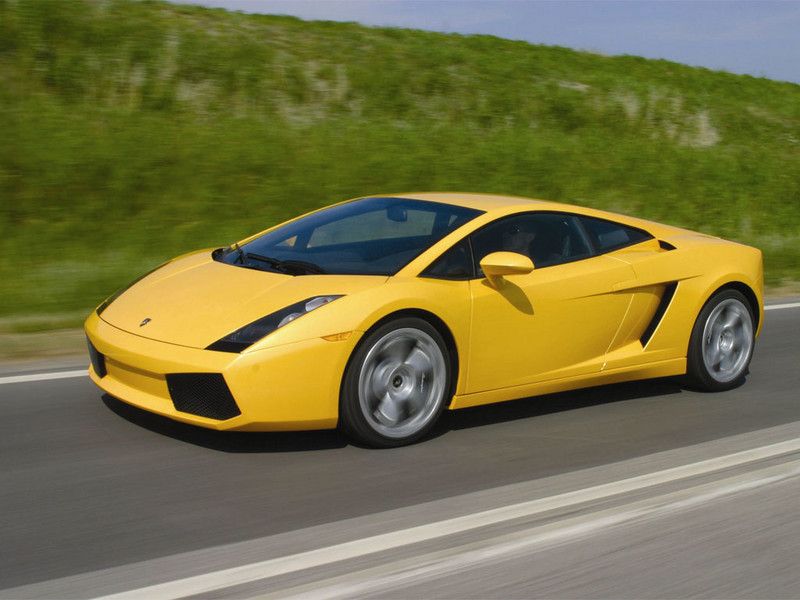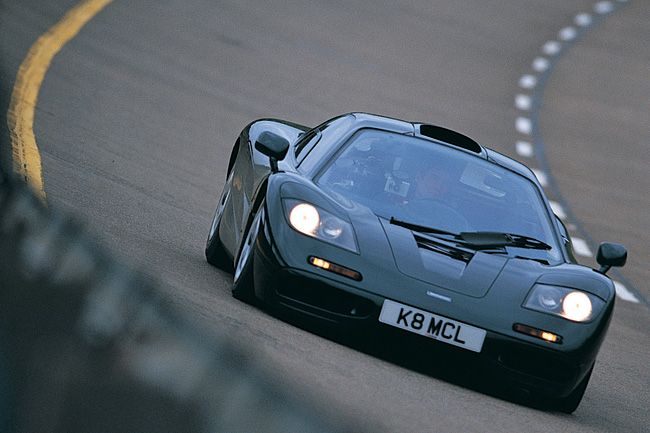After the M1, launched in the ’70, BMW has decided it was about time to have something more to say in the world of supercars. After Audi has unveiled the R8 supercar, BMW has announced that they will unveil a direct competitor for it. The new model, called Z10 will debut in late 2008 as a 2009 model. It will compete with Ferrari F430 and Lamborghini Gallardo.
2009 BMW Z10
- Make: Array
- Model: 2009 BMW Z10
- Horsepower: 550
- [do not use] Vehicle Model: Array
Because the BMW cars are not the strongest or the fastest sports cars out, the body will be made of aluminum, carbon fiber and magnesium. This will help BMW to have a low-weight car; it is supposed to be around 2645 lbs, that will easily rich a top speed that will make it worthy of the name of a supercar.
The 2009 Z10 will almost be the same in size as Lamborghini Gallardo, but 550 lbs less in weight. This means, aprox, a wheelbase of 2560 mm, overall length of 4300 mm, width of 1900 mm and height of 1165 mm.
The BMW Z10 will be one of the first cars to use wind-directing elements as active spoilers. This will translate in some geometry variable spoilers, we think, should modify their position by the speed of the car.
BMW has set development targets for the Z10 to be a rear/mid-engine supercar powered by V10 turbochargers. The standard 5.0 liter V10 engine from the M5 and M6 models with an output of 500 hp will be tuned up and in the Z10 will have a targeted performance of 550 hp. The 2645 lbs weight and the 550 hp output give the car a power to weight ratio of 458bhp per tone.
The Z10 will have a top speed and 195 mph and will make the 0 to 60 mph sprint in 3.8 seconds.
Also it is supposed that Z10 will import the 7-speed Sequential Manual Gearbox from the M5. The SMG employs Formula 1 racing technology to help drivers extract the Z10's full performance potential. The 7-speed SMG incorporates a number of special functions and safeguards, including: automatic downshift to 1st gear for starting off from rest, whether in D or S mode, Slip Control, Hill Detection.
It will include all the electronics you would expect to keep it on the road while pressing on, together with active spoilers and a venturi underbody to suck onto the tarmac.
The BMW Z10 will come in both coupe and convertible versions. The open-topped will feature a carbon fiber folding roof to allow it to compete with Ferrari F430 Spider while keeping weight and the centre of gravity down.
The car will be produced at the Bavarian company Californian studios and will be priced somewhere around $150.000.
-----
History
1978-1981 BMW M1
The M1 was the first car produced by BMW Motorsport. Originally released in 1978, the M1 experienced production and homologation problems that kept it from international competition until the car was no longer competitive. First shown at the Paris Motor Show, the M1 was discontinued in 1981.
The BMW M1 is a supercar automobile, and was the first and only mid-engined BMW.
The Giugiaro-designed M1 was to be assembled by Lamborghini, but Lamborghini's poor financial situation and assembly delays caused BMW to move assembly to Baur, the German convertible builders.
With a 24-valve cylinder head, the engine had 277 hp at 6500 rpm and develops 239 ft/lb of torque at 5000 rpm. Several racing versions exist with power outputs of up to 850hp.
1993 McLaren F1
The McLaren F1 benefits from World Championship Formula One technology, experience, and is the world's first production road car to feature an all carbon composite monocoque and body structure.
This unique material creates the low weight necessary for performance with exceptional strength to exceed demanding industry safety requirements.
McLaren Automotive commissioned the BMW S70/2 engine, designed and built specifically for the F1. This 6.1 litre, quad-cam, 48-valve V12 power unit produces no less than 627 bhp and drives through a bespoke six-speed transaxle gearbox.
In March 1998, the F1 confirmed that it is the fastest production car in the world, achieving a record top speed of 240.14mph. This was a record it held until March 2005.
Bmw Nazca M12 concept
In 1991, Italdesign unveiled the Bmw Nazca M12 concept. It is a 2-door coupe with a weight of 3088 lbs. It was powered by a V12 engine with an output of 219 hp.
-----
Competitors
Lamborghini Gallardo
Although it may look like the larger Murcielago, when you put the two hip-high supercars next to each other, the Gallardo immediately appears more compact and blunter.
The aluminum V10 engine tops out at 520 hp at 8,000 rpm and 376 pound-feet of torque at 4,500 rpm. It launches the car from zero to 60 mph in 4.3 seconds. The gasoline consumption is estimated at a 10 mpg city / 19 mpg highway rate. The V10 features an 18-degree offset crankshaft for even firing, continuously variable valve timing, dry-sump oiling and a variable-length induction system. All the V10 power is fed to the pavement through an AWD system that can vary front-to rear, if necessary, as the suspension front and rear is a double-wishbone design. The stopping duties are handled by the Beefy Brembo brakes that have eight-piston calipers clamping things down up things.
The chassis is a mix of alloy stampings, extruded elements and castings. The exterior is composed of thermoplastic panels, except for the doors, which are made of steel and swing out, instead of upward scissor-style.
Ferrari F430
Excitingly focused mini-Enzo looks, fabulously energetic engine, ultra-sharp but easy-to-drive handling, an F1 shift which works as it should, huge stopping power with optional carbon-ceramic brakes, every drive is a special occasion with the Ferrari F430.
The new F430 hails the arrival of a whole new generation of Ferrari 8-cylinder berlinettas and takes the aluminium technologies first used in the 360 Modena to a new level. It also offers a series of spectacular innovations directly derived from Ferrari's Formula 1 single-seaters.
Two of these innovations are world firsts for productions cars: the electronic differential (E-Diff) initially developed by Ferrari for its F1 single-seaters and designed to make the most of the engine's torque to optimise traction, and the handily placed steering wheel-mounted commutator switch (better known to the Scuderia drivers as "manettino") which directly controls the integrated systems governing vehicle dynamics.
The F430 is powered by a completely new 4308 cc engine. The new V8 delivers a massive 490 hp and a specific power of 114 hp/l. Its performance is absolutely excellent too: 0 to 100 km/h (0 to 62 mph) acceleration in four seconds flat and a top speed in excess of 315 km/h (196 mph).
Audi R8
Three years after the unveiling of the Audi Le Mans quattro concept car, the production version made its debut at the Paris Motor Show in the guise of the new Audi R8 mid-engined sports model. It is a fascinating driving machine and the sporty pinnacle of the Audi brand.
This engineering achievement is suitably reflected by a host of impressive figures: the engine’s top speed is a notable 8,250 rpm. The engine delivers its peak output of 420 bhp at 7,800 rpm. With its displacement of 4,163 cm3, this outstanding engine breaks through the magic barrier for a production vehicle of 100 bhp per litre. The high-revving concept also means that the maximum piston speed is 24.1 metres per second at the engine’s rated speed.
Every piston thus changes direction around 275 times per second. The torque is equally impressive: the peak value of 430 Newton-metres is achieved between engine speeds of 4,500 and 6,000 rpm. Better still, at least 90 percent of this figure is achieved across the impressively wide speed range from 3,500 to 7,500 rpm. This assures thrust across an extensive range of engine speeds and therefore superb pulling power, enabling the driver to drive in a relaxed style without frequent gear changes.
The road performance is correspondingly impressive: the R8 dashes to 100 km/h from a standstill in just 4.6 seconds, whether with manual gearbox or with R tronic sequential gearshifting. Thanks to its quattro drive and perfect weigh distribution, problems of traction are an alien concept to it. It touches the 200 km/h mark after 14.9 seconds. Thanks to its refined aerodynamics, the engine’s propulsive power is only finally harnessed by drag at a top speed of 187 mph.

